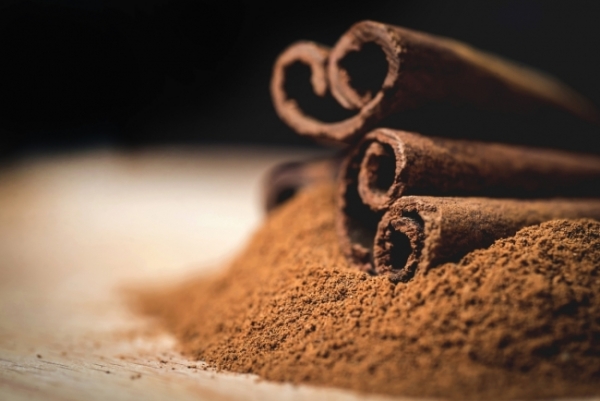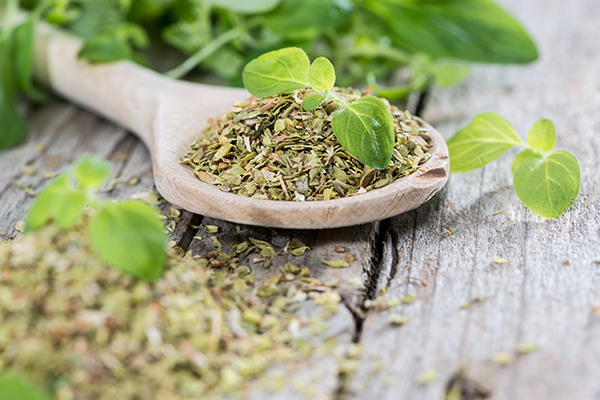Posted on Tuesday, October 2, 2018
As seen in Charm East Texas
Columbus sailed the ocean blue in 1492, and it's time to commemorate the occasion this Columbus Day! When Columbus set sail, one of his primary aims was to locate the "spice islands" along the Asian coast; exotic spices were rare and valuable commodities in those days. Columbus may have missed the mark in his search for the spice islands (landing on Cuba instead!), but in its place he discovered a whole new world where culinary inspiration awaited.
Spices are a quintessential component in the diversity of food and culture all around the world. In honor of Columbus Day this year, let's do a little of our own exploring and celebrate the diverse world of spices with all their delicious culinary magic. They were magical enough to make Columbus sail across the ocean to find them, but luckily they are as easy to find as a quick trip to your neighborhood Brookshire Brothers.

15 Flavorful Facts On Spices
- All spices are rich in various types of antioxidants, making them a tasty way to bolster the body’s defenses against different diseases and illnesses.
- Those living in hot climates tend to cook with more spices because the spices inhibit spoilage. Taste preferences are passed on genetically, and those who eat the most seasoned food tend to be healthiest, live longer, and have more offspring.
- Herbs come from the leaves of plants while spices are produced from other parts (bark, buds, roots, seeds, etc). Some herbs and spices with very different flavors can come from the same plant, such as cilantro leaves and coriander seeds.
Charred Chile & Corn Salsa Recipe: Who doesn’t love cilantro?
- The best all-around anti-microbial spices are thyme, cinnamon, tarragon, and cumin. Spicy chilies and hot peppers kill up to 75% of bacteria, while black pepper, ginger, celery seed, and lemon juice kill about 25% of bacteria.
- Some spices—especially cinnamon and garlic—appear to have a pronounced beneficial effect on blood lipids, making them a good choice for heart health.
- Nutmeg and mace come from the same seed, but nutmeg is the seed while mace is the lacy reddish covering on the seed. Mace has a similar flavor to nutmeg but is slightly more pungent.
Get cooking: Fall in love with this winter squash recipe—featuring nutmeg and other herbs!
- Fenugreek can safely help increase milk supply in nursing mothers.
- Saffron threads are stigmas from flowers cultivated in the Middle East. The flowers bloom for only one week of the year, and each flower produces only three threads that must be hand-harvested; it’s no wonder that saffron is expensive! Saffron has a unique flavor that adds a distinctive and sophisticated touch to dishes.
- Oregano has strong anti-microbial properties, improves blood sugar, kills cancer cells, and can even function as a powerful antiseptic used in food packaging and the medical industry.

Feelin’ chili: Oregano puts the comfort in this cold-weather recipe
- Researchers in Brazil found an antioxidant in parsley, thyme, chamomile, and red pepper that improves neuron formation and strengthens the connections between brain cells.
- Historically, spices were a valuable currency for trade. They were prized for not just food seasoning, but also medical purposes. Many modern pharmaceuticals are based on compounds originally found in spices and plants.
- Cinnamon has many benefits including blood sugar management, anti-microbial properties, heart benefits, cancer prevention, and even brain-boosting properties.
Think cinnamon: ‘Tis the season for apple butter!
- Cayenne and other spicy peppers have been shown to increase metabolic rate and aid weight loss. Spicy peppers also aid digestion and have been shown to cut cancer risk.
- Turmeric contains powerful antioxidants that work well as an anti-inflammatory and can even act as an alternative to traditional over-the-counter pain relievers. With a slightly pungent and sweet flavor, Tumeric is very popular in Indian cuisine. Its vibrant golden hue works well as a natural alternative to food coloring—you might just see it in organic macaroni and cheese!
- Foods that are well-seasoned can be more palatable with less salt. Before reaching for the saltshaker, see first that your food is seasoned well with herbs, spices, and something sour such as vinegar or lemon juice. These alternatives can enhance a salty flavor without adding more salt.
Visit your local Brookshire Brothers to find your spice!

Angela Larson is a registered dietitian (RD) who works with Brookshire Brothers promoting real fresh, real delicious foods and nutrition education to the community. She is also a clinical dietitian representing Woodland Heights Medical Center in Lufkin where she does outreach education on food and nutrition. Food is her passion, so Angela loves trying new recipes and exploring the more holistic side of nutrition. Angela loves to cook, garden, and spend time outdoors. In addition to the Brookshire Brothers blog, look for Angela's monthly articles in Charm East Texas.
